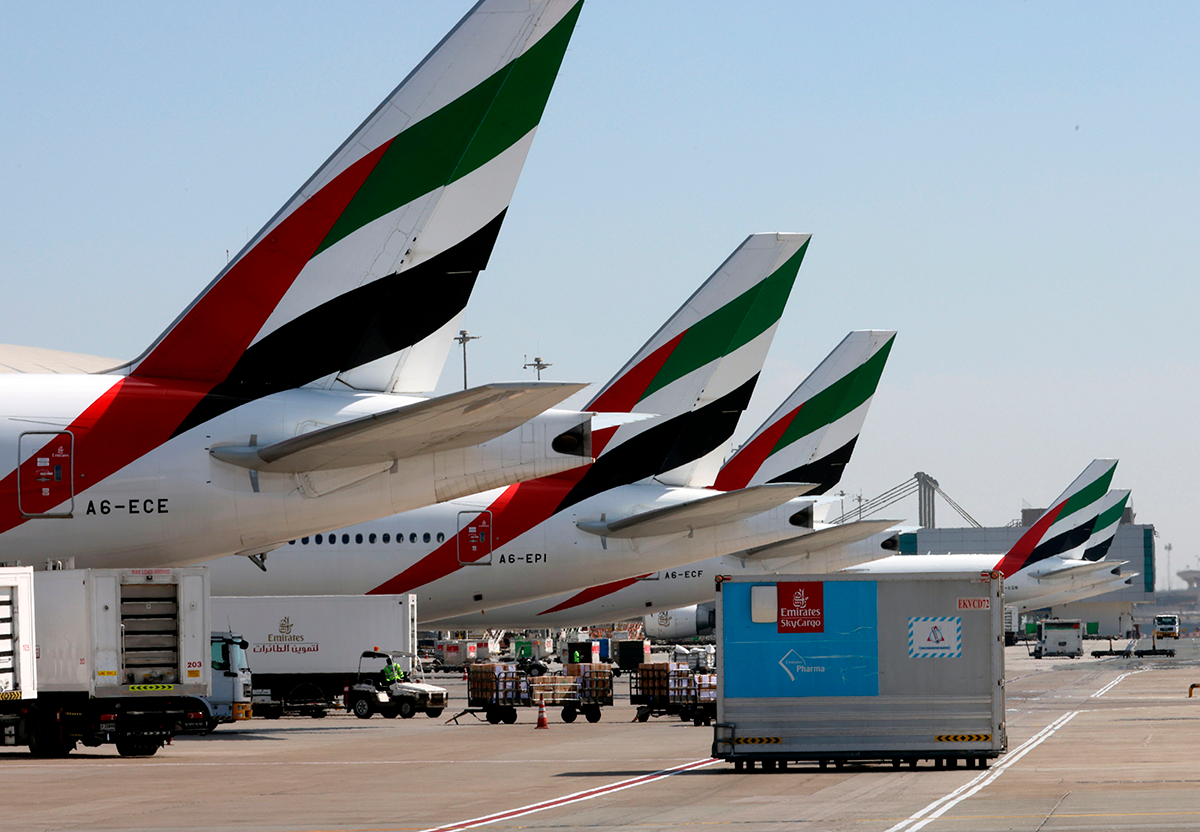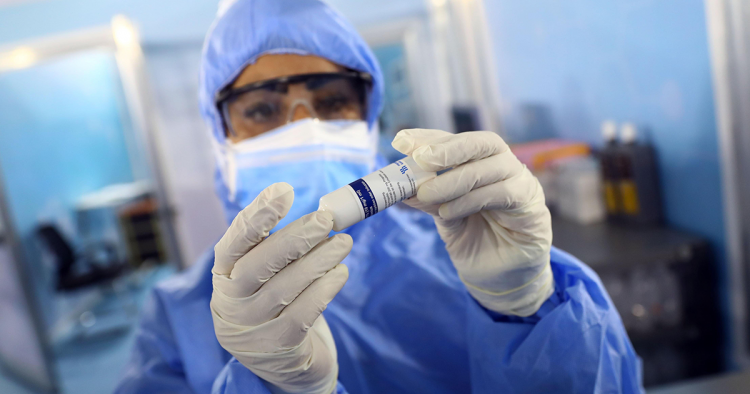This article is part of the publication Thinking MENA Futures, produced in conjunction with MEI's Strategic Foresight Initiative and the MEI Futures Forum. Read the other articles in the series here.
The pandemic has shaken up economic systems and brought forth unprecedented challenges, as we are all aware. However, I also believe that the “new reality” we are confronted with today is actually one that presents us with an opportunity: to prepare for a future we can own by connecting the dots between critical sectors.
The new reality in essence is about three fundamental areas we can proactively impact. One, health care management; two, a focus on the energy transition; and three, the connectivity of people and goods. These three critical building blocks are deeply interlocked, with each playing a decisive role in how our future will be shaped. The way we bring together new paradigms in these sectors across the Middle East will help us to thrive in the new reality.
Reinventing health
One thing we have learned from the pandemic is that health care systems need to be agile and flexible enough not just to meet the requirements we see in front of us today, but also for unexpected periods of increased capacity and need. Hospitals must be prepared for contingencies; health care professionals must be ready to learn new, digital skills to increase efficiency; and every health care environment must look at continuous improvement.
Today in the Middle East, countries such as the UAE and Saudi Arabia have set good examples of how to manage the pandemic with the hands-on involvement of top leadership ensuring that research is prioritized, frontline professionals are equipped, and advanced technology is mobilized when crisis hits.
We have seen these countries establish clear protocols for testing, treatment, and recovery at dedicated COVID-19 hospitals or at innovative facilities such as our CT-in-a-Box. We have watched government directives shift in real time based on the situation on the ground. We have seen a fast and thorough implementation of vaccinations. All of these examples show a focus on flexibility and resiliency that must be the hallmark of health care systems in the future.
This does not only apply to unexpected or emergency situations like COVID. Looking to the next five to ten years, we are pleased to bear witness to and support the efforts of regional governments to address the rising incidence of lifestyle diseases through preventive care and lifestyle changes. We continue to see significant investment in health care infrastructure — set to reach $89 billion by next year in the Gulf Cooperation Council countries. And GE will continue to be a dedicated partner as medical professional training and technology innovation programs are shored up across the region.
Together, these areas of focus will allow the region’s health care systems to work toward earlier diagnoses and better treatment outcomes, while being flexible and resilient enough to withstand emergency needs.
"The new reality in essence is about three fundamental areas we can proactively impact. One, health care management; two, a focus on the energy transition; and three, the connectivity of people and goods."
The energy trilemma
Hospitals and health care infrastructure rely on power and energy infrastructure to function, so the future of energy is the next critical aspect we must consider when contemplating a prosperous future for the Middle East.
As the region focuses on decisive climate change action, the energy sector’s priority will be to address what I call the "energy trilemma." This reflects to how we manage environmental sustainability, while balancing needs in two areas: energy affordability and energy security/reliability. We will see an increased focus on decarbonization, but this does not have to be at odds with the legacy of the region’s strong oil and gas industry.
Although oil and gas revenues will continue to feed into regional economies, in the next five to ten years, we will see a more diversified energy mix. Many governments are making commitments to cleaner generation while at the same time finding ways to meet increased supply. This calls for integrating advanced technology across a mix of sources, and ensuring digital solutions and an integrated grid are present. This includes deploying technology including wind turbines such as the Cypress platform that can work at the lower wind speeds that are prevalent across the Middle East. Also important will be the H-Class gas turbine, a world-record holder in efficiency that can also help to maintain a reliable energy supply.
Innovation — as always — will be key. This will see an increased shift toward next-generation energy: both green and blue hydrogen, carbon capture, utilization, and storage (CCUS) technology, nuclear technology, and hybrids, such as the world’s first battery-gas turbine hybrid system.

Efficiency in connectivity
Finally, we turn to connectivity. Many cities in the region had evolved as hubs before the pandemic impacted the global aviation sector. I predict that these hubs will emerge stronger from the crisis due to the proactive approach taken by the region’s carriers and regulators. By connecting people around the world through a robust aviation sector, we can continue to make the Middle East a pivotal region for the future.
Moving forward, two key aspects will be decisive in shaping the aviation sector. One, which is connected to the energy transition, is a focus on fuel efficiency and cutting environmental emissions. GE has recently announced the RISE program, which aims to cut carbon dioxide emissions by 20% through our partnership with CFM.
Second, parallel to both the health care and energy sectors, the aviation sector must tap into advanced data analytics to provide insights and opportunities for innovation. For example, our digital business has developed the flight data application FlightPulse, which integrates airline-specific fleet data with pilot historical trend data to help improve fuel efficiency and risk management.
Connect the dots
Flexibility. Resilience. Digitization. Efficiency. Innovation. Across these three core economic sectors, the opportunities to be future-ready exist already — and all three sectors need to leverage similar tools to prepare and improve. We are fortunate. There is clear direction from the leadership in this region. There is technology at hand. Now, nothing must stop us from making the transformational pivot.
Let us connect the dots. Take decisive measures. And implement them.
Nabil Habayeb is senior vice president of GE and president & CEO of GE International Markets.
Photo by Ahmed Gomaa/Xinhua via Getty
The Middle East Institute (MEI) is an independent, non-partisan, non-for-profit, educational organization. It does not engage in advocacy and its scholars’ opinions are their own. MEI welcomes financial donations, but retains sole editorial control over its work and its publications reflect only the authors’ views. For a listing of MEI donors, please click here.













